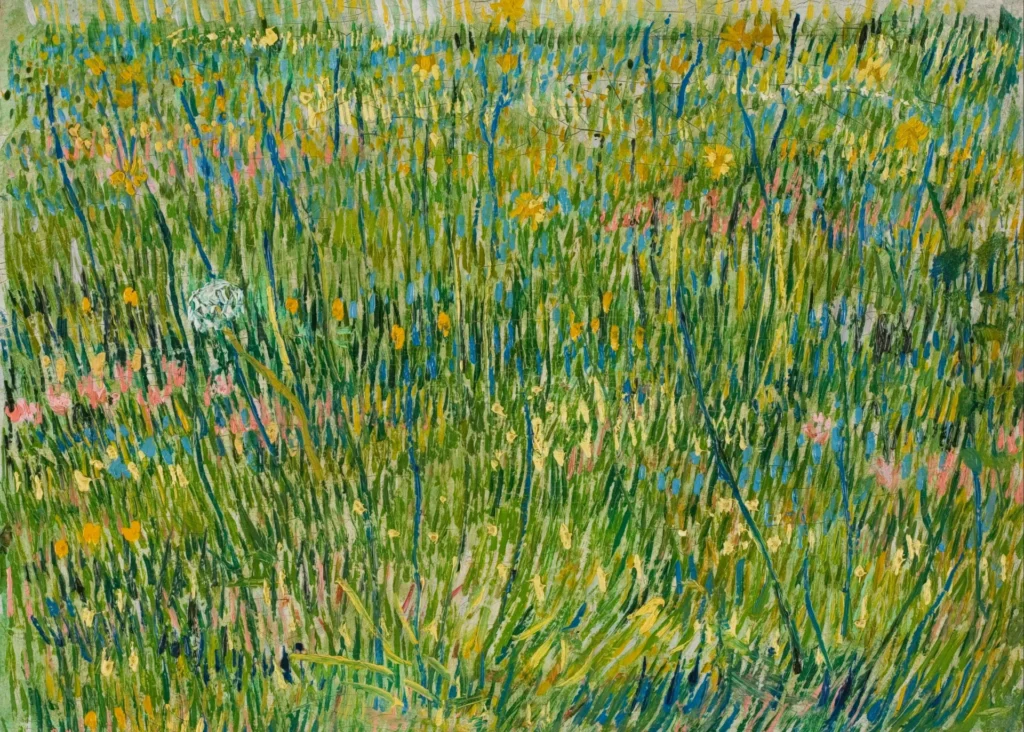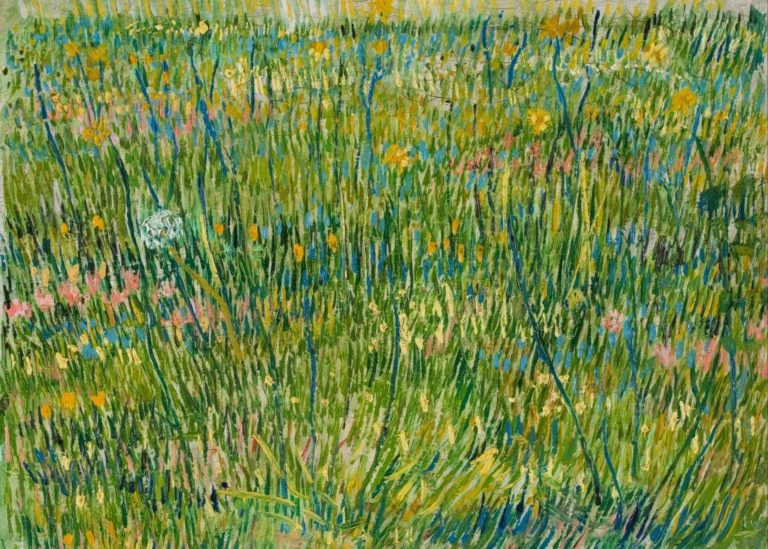Patch Of Grass (1887)
Patch of Grass is an exquisite oil on canvas work by Vincent van Gogh, created during a pivotal moment in his artistic journey, between April and June 1887. Drawing inspiration from Japanese prints, Van Gogh zooms in on individual blades of grass and colorful flowers, highlighting his newfound affinity for lighter colors and dynamic techniques acquired during his time in Paris. The painting, measuring 30.8 × 39.7 cm, offers a rich visual experience that exemplifies his ability to blend influences and evolve as an artist.
April - June 1887
About the Artwork
Created during the spring of 1887 while Van Gogh was living in Paris, Patch of Grass marks a turning point in his artistic career. Here, he explores the beauty of the natural world through a close-up lens, influenced by Japanese aesthetics that captivated him. Van Gogh's use of a previously painted canvas illustrates his artistic evolution, as he abandoned the somber hues of his earlier works for a brighter palette that characterized his Paris years. This painting not only reflects his personal growth but also indicates the broader context of the Impressionist movement, which encouraged artists to embrace spontaneity and color. Today, it stands as a testimony to Van Gogh's remarkable ability to adapt and innovate, capturing the vividness of everyday life.
Did You Know
Van Gogh was heavily influenced by Japanese art, which inspired many of his works, including ‘Patch of Grass.’ He collected Japanese prints and integrated their aesthetic into his increasingly colorful and stylized paintings.
The canvas for Patch of Grass originally featured a painting of a woman in a hat, indicating Van Gogh’s practice of reusing canvases. This technique illustrates his rapid evolution as an artist from his early dark palette to the vibrant colors of his later works.
Patch of Grass is housed in the Kröller-Müller Museum, one of the largest collections of Van Gogh’s work, providing essential context for his development as an artist and the innovative ways he adapted to the influences surrounding him during his lifetime.










